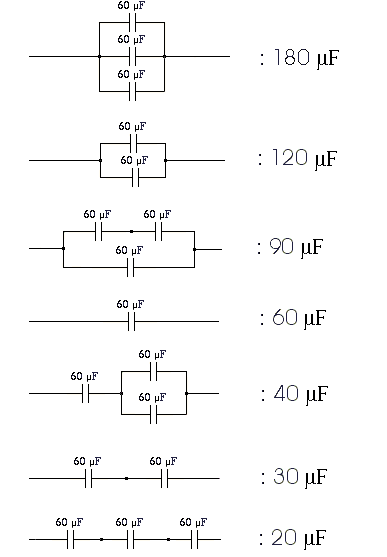This question doesn't support checking answers.155. Counting Capacitor Circuits
Publish Date:
An electric circuit uses exclusively identical capacitors of the same value C.
The capacitors can be connected in series or in parallel to form sub-units, which can then be connected in series or in parallel with other capacitors or other sub-units to form larger sub-units, and so on up to a final circuit.
Using this simple procedure and up to n identical capacitors, we can make circuits having a range of different total capacitances. For example, using up to n=3 capacitors of 60 $\mu$ F each, we can obtain the following 7 distinct total capacitance values:

If we denote by D(n) the number of distinct total capacitance values we can obtain when using up to n equal-valued capacitors and the simple procedure described above, we have: D(1)=1, D(2)=3, D(3)=7 ...
Find D(18).
Reminder : When connecting capacitors C1, C2 etc in parallel, the total capacitance is CT = C1 + C2 +...,
whereas when connecting them in series, the overall capacitance is given by: $\dfrac{1}{C_T} = \dfrac{1}{C_1} + \dfrac{1}{C_2} + ...$
Press F12 and use the "Console" tab to view the output of your codes.